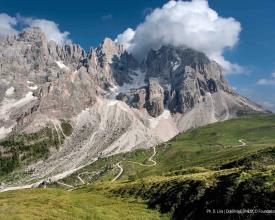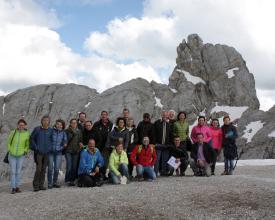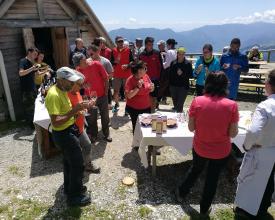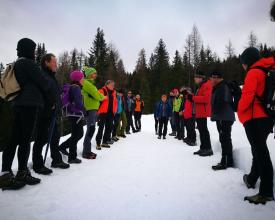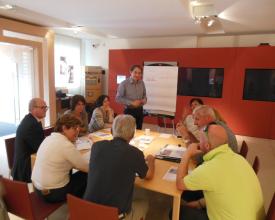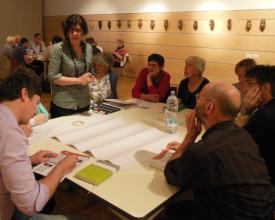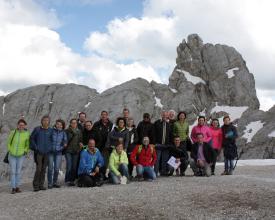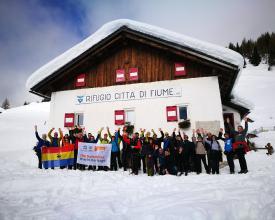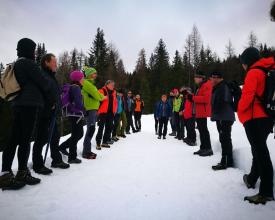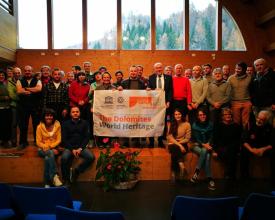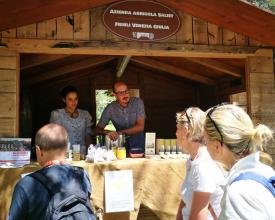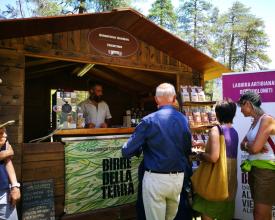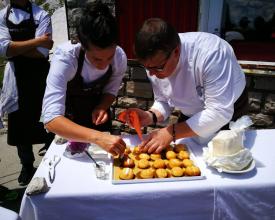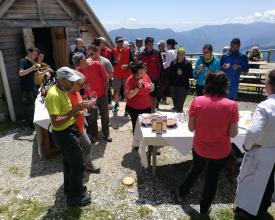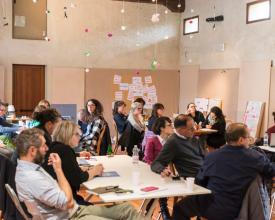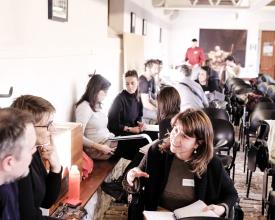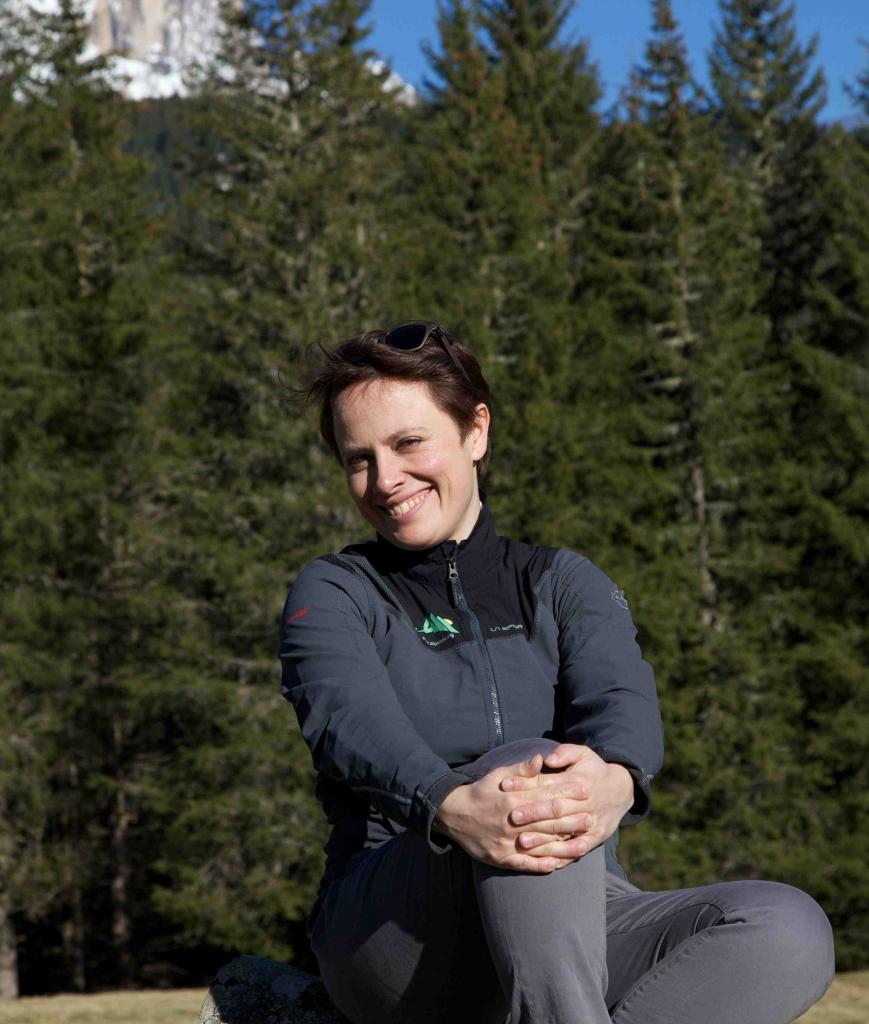
Safeguarding the living mountainous landscape of the Dolomites
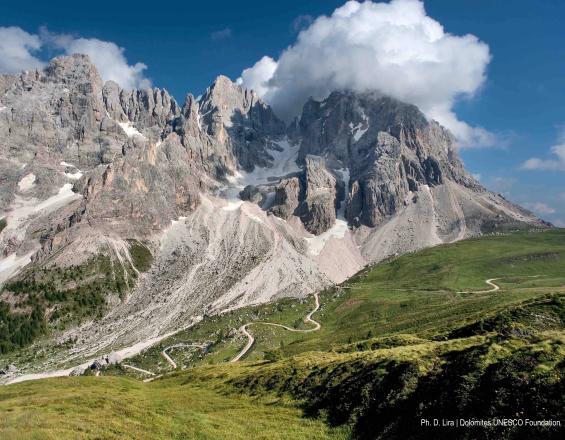
The Dolomites were inscribed on the World Heritage List in 2009 as a group of nine mountainous systems. Inscribed under criteria (vii) and (viii) for their geological values, the Dolomites are a mix of multiple and dynamic natural and human-shaped Alpine landscapes. The Dolomites are not only an exceptional natural site but also a place of great cultural diversity and history made of communities with multiple cultural backgrounds, communities of minorities, a large spectrum of cultural traditions and sites, as well as one of the temples of alpinism, which was inscribed on the UNESCO Intangible Cultural Heritage List in 2019.
The solution focuses on the role played by multiple formal and informal networks of communities and institutions in raising awareness on the Site values and promoting the huge natural and cultural diversity of the Dolomites, while aiming at active conservation of the landscape as well as at environmental, economic and social sustainability.
Context
Challenges addressed
The solution focuses on the work done in fostering the inclusion of local, communities, local stakeholders in the management of the Dolomites’ rich natural and cultural heritage.
The solution addresses the following challenges:
- Environmental challenges: use of natural resources, sharing benefits with local actors, consider economic development and conservation needs together, holistically, in order to find a viable, sustainable path forward
- Social challenges: changes in local communities and local actors, complex governance system that requires the commitment of political and institutional actors in five provinces and two regions, political and institutional changes in leadership positions, people’s awareness on the Outstanding Universal Value and other values
- challenges: local economic development, food production in mountain regions, disconnection between food producer and consumer, tourism development.
Location
Process
Summary of the process
The five building blocks interact with each other in building a participated approach to the management and conservation of the Dolomites as a World Heritage Site, a protected are and a set of cultural landscapes.
The #Dolomites2040 participatory process contributed to the creation of the Site Management Strategy, in which active engagement of local communities and networked management are essential. #Dolomites2040 set therefore the stage for the establishment of key platforms for connection like the “Dolomites UNESCO World Heritage Mountain Huts” (BB2) and the “Produttori di Qualità” (BB2) and the museum network (BB5). These platforms empower key local actors to become ambassadors for the promotion of the Outstanding Universal Value together with other natural and cultural values of the Dolomites. These local actors play a key role in raising awareness with the wider public on the importance of the conservation of the Dolomites through their experiences, lives and their tangible and intangible products (BB6).
Building Blocks
#Dolomites2040: a participatory approach to contribute to the site’s Overall Management Strategy
The strategy #Dolomites2040 is a participatory process that was put in place by the UNESCO Dolomites Foundation in 2015. The process involved park authorities, local administrations, tourist industry consortia, environmental associations, hoteliers, farmers and professional associations with the aim of developing a set of recommendations for the management strategy of the World Heritage property of the Dolomites on four macro-themes: tourism, socio-economic development, active conservation and relationship-building.
The participatory process was carried out through a series of 11 meetings with a small group of people using the World Café method; during the meetings participants discussed key questions looking at how they would like to see the Dolomites in 2040 looking at ways to guarantee conservation as well as to support the livelihood of people living inside and nearby the property.
These information, proposals and worries have been key to the 2015 creation of the Overall Management Strategy and the Tourism Strategy, and the establishment of short-, medium- and long-term management and conservation directions tackling both the protection of the Outstanding Universal Value as well as matters of local importance.
Enabling factors
A strong overarching institutional framework, which through the UNESCO Dolomites Foundation (FD4U) is empowered to act locally and regionally in the engagement of local communities, governments and other local actors. The Foundation consists of a number of institutional organisations which promote dialogue between the territorial authorities (Board of Directors), scientific objectives (Scientific Committee), socio-economic and environmental issues (Board of Supporters) and the interests of the local authorities (municipalities and communities).
Lesson learned
During these cafés and meetings, participants from local communities, institutions and other local actors had a direct chance to share proposals and ideas as well as doubts and worries they had concerning the long-term conservation of the site, the economic development of the area and the livelihood of communities.
The process highlighted the importance of fostering local participation and cooperation for the improved management of the Dolomites. The engagement of all stakeholder is a constant investment that needs to be done in order to enable the effective management and conservation of the area together with the safeguarding of local and traditional ways of living and interacting with the natural resources.
The process has allowed the management institutions to better identify strategies to tackle points of criticism from local actor and to create means for social and economic development of local communities in harmony with nature.
Building capacities of mountain hut owners and managers
In 2016, the UNESCO Dolomites Foundation in cooperation with the association of mountaineer and mountain climbing and the owners and managers of 66 mountain refuge in the core area of the Property, have launched the project “Dolomites UNESCO World Heritage Mountain Huts”. The project aims at strengthening the capacities of mountain hut managers as key stakeholders for the effective management of the Dolomites and key actors in the communication and promotion of the values of the Dolomites.
This partnership has been further strengthened through the adoption of the Convention of the Dolomites UNESCO World Heritage Mountain Huts in 2017, which focuses on boosting the symbolic role of refuges, promoting them as information providers and raising the standard of their accommodation and their environmental performance.
The project focused not only on the installation of information panels and point, but also on training and capacity building activities dedicated to mountain hut owners and managers. These activities focused on UNESCO World Heritage key information and on understanding the Outstanding Universal Value of the Dolomites and its management structure.
Enabling factors
A framework for cooperation between the UNESCO Dolomites Foundation, the associations of mountaineers and mountain climbing and the 66 mountain hut managers.
The experience of the #Dolomites2040 participatory process, which through the involvement of all relevant stakeholders had identified the essential role played by hut owners in safeguarding the site and the wider territory (experiencing local culture,opportunities for people to meet and stay within the Dolomites).
Additionally, the project was supported by the cooperation with the Trentino School of Management.
Lesson learned
The process created a chance for the engagement of key stakeholders. The refuge owners and managers play a key role in the contact with the general public and visitors. They awareness is key in shaping a more sustainable and site-friendly visitor experience.
The inscription of the Dolomites on the World Heritage List has allowed for people to become more aware of the natural and cultural value of the Dolomites and its rich cultural landscape, the project became a chance to acknowledge and communicate the cultural values of the site.
The project offered a chance for mountain hut owners and managers to become more actively engaged in the communication and promotion of the values of the Dolomites, and also in enhancing
If used carefully, the UNESCO World Heritage status can be used as a certification to support the sustainable development of tourism activities. This requires the wider inclusion of key stakeholders.
Quality production: connecting food production with mountain huts
The building block focuses on the network of agricultural producers and breeders that has been established under the framework of the project “Produttori di Qualità”(in English “producers of quality”). The network is currently made of 72 local individuals/small companies dedicated to the production of food and beverage products that are certified for their quality. The network includes producers focused on the creation of quality products rather than quantity.
The project focused on enhancing the awareness of living and operating in a World Heritage site and in creating meaningful networks of good practices and cooperation between producers, valuing the specificity of each product.
This has also become a platform for the creation of a direct connection between quality production and mountain huts, and hence enhancing the experience of locals, visitors, tourists as well as promoting local products and creating a mean for a sustainable economic development. In this cases farmers and breeders are not only seen as users of the natural environment, but active actors in the conservation of the landscape of the Dolomites.
Enabling factors
The existence of different systems of certification and/or recognition of quality productions and products is key to the establishment of a virtuous and sustainable network.
Understanding the values added by farmers, breeders and farming/breeding landscape to the value of the Dolomites.
The Site Overall Management Strategy includes a specific strategic objective on the promotion of sustainable economies and of local products, establishing an institutional framework for the project to be developed as part of the overall management strategy of the Dolomites.
Lesson learned
Importance of fostering and supporting sustainable economic development through the production of food and beverage products of quality is a key element for the long-term habitation of the Dolomites and a key element to avoid the further depopulation of mountain regions.
Involving producers in an active network has allowed to involve them in raising awareness on the value of the Dolomites as well as in being mindful of this values when looking at the activities they carry out.
Synergies between producers and “users” (mountain hut managers) were needed to ensure economic viability of the production but also as key elements for the creation sustainable tourism experiences.
Awareness raising through the experience of local people and communities
Awareness raising on the values of the Dolomites as a World Heritage property is necessary for the long term conservation of the place but also a provision of the World Heritage Convention.
In order to further advance awareness raising efforts among citizens, communities and local actors living insider and nearby the Dolomites, the UNESCO Dolomites Foundation has created a weekly television segment called Noi, Dolomiti UNESCO” (in English “We are the UNESCO Dolomites”) in which are presented the experiences and lives of people living, operating and/or working inside the territory of the Dolomites. The series is televised through the main television channels of the five provinces and the two regions in which the Dolomites are located, and via YouTube.
This activity aims at raising awareness at the wider level of regional and territorial communities, focusing on the natural and cultural values of the site but also exploring the social and economic lives of local communities and people.
Enabling factors
Active engagement of local stakeholders, producers and communities living in the area of the Dolomites through established formal and informal networks, from the experience of the Dolomites 2040 process to the network of mountain huts and producers.
Agreements with local media networks and channels.
Lesson learned
The UNESCO World Heritage status is complex to understand for individuals not literate in the language and proceedings of the World Heritage Convention. “Noi Dolomiti UNESCO” lets local people speak for the Site with their own words and therefore this series humanizes the issue of protecting the natural and cultural values of the site This is one way to offer a window in understanding the cooperation network behind the complex management system in place but also to raise awareness on the work done by local communities in conserving the multilayered values of the Dolomites its landscapes
Resources
Museum network and cultural itineraries
The network is an opportunity to explore the Dolomites’ cultural richness in connection to its Outstanding Universal Value, though a series of multilingual (including minorities) museums located in mountain communities and cultural itineraries made to explore the Dolomites and its people and history. As museum play a key role in the life of local communities and they support the recording of local history and experiences through time, these places are also fundamental for communicating the values of the Dolomites through several natural and cultural perspectives.
Museums and cultural itineraries play a key role in raising awareness on the life of local communities and the experience lived by these territories from prehistory, through the two world wars until today, through events that have deeply shaped the cultural and social communities of this areas. The network of museums is a key platform for the direct interaction with local communities and for these communities to share their knowledge about the Dolomites and the historical events that have shaped its landscapes.
Last but not least, the offer a chance for people with physical disabilities to explore the Dolomites in an accessible way
Enabling factors
The existence of several museums across the territory of the Dolomites which were interested in working together to raise awareness on natural, cultural and historical aspects of these areas and their communities.
These territorial museums have a role in the life of local communities and they have a purpose in the education of visitors exploring the Dolomites both at a high and low altitude.
The strong and comprehensive network of institutional and informal stakeholders that is managed through the UNESCO Dolomites Foundation
Lesson learned
Raising awareness on the Dolomites and its natural values requires the understanding of their natural, social and cultural setting. As the Dolomites extend across an area of great cultural richness which is both source of unique cultural values and mirror of a complex mosaic of local identities of communities that are culturally and socially diverse.
Museums, with their strong local declination and their deep permeation in the social and cultural tissues of different areas of the Dolomites, are a great platform to be actively and meaningfully engaged in the lives of communities and to allow them to share their knowledge and memories, which are valuable information for the effective management of the Dolomites and its multilayered values
Resources
Impacts
The solution focuses on approaches that have been put in place for the enhanced and more active engagement of communities in the safeguarding of the Dolomites’ natural and cultural heritage. These approaches have widely contributed in fostering the empowerment of local actors as ambassadors and stewards of the site, as well as in recognizing the key role they play in raising awareness with the wider public.
Environmental, social and economic impacts of this process are closely interconnected and mostly to be seen in the long term. Nevertheless, awareness is crucial for having durable results, because only an aware community can share goals and perceive them as positive and desired, rather than imposed.
The solution includes working together with key stakeholders in the development of sustainable economic process to enable the livelihood of local communities though a virtuous system of quality production and hospitality that is mindful of the environment and the people living in this mountain area.
The solution features putting in places multiple platforms in place for the direct engagement of people so that to cooperatively identify issues, points of uncertainties as well as solutions and innovative processes that could benefit the site and its people.
Beneficiaries
Local communities living inside and near the area of the Dolomites, mountain hut managers and local producers of food products (farmers, breeders, foragers). Other beneficiaries are the protected areas, and the cultural traditions and practices .

